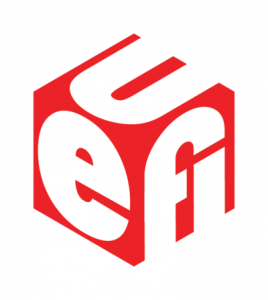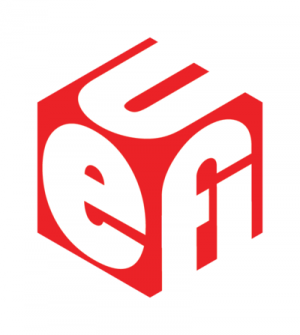 In our last post on this topic,we reported that much UEFI development work remained to be completed, primarily regarding DOS and Win-OS/2 sessions. Today, that work has advanced considerably, with more DOS and Win-OS/2 apps and games now running under ArcaOS on a wider range of systems than ever before. In fact, on systems which are incapable of providing usable DOS and Win-OS/2 sessions when booted in BIOS mode, DOS and Win-OS/2 run splendidly when booted in UEFI mode, thanks to the environment we create. This should provide a truly amazing experience for all retro-gamers seeking the ability to run classic DOS and Windows games in a native environment without the overhead of a virtualization layer.
In our last post on this topic,we reported that much UEFI development work remained to be completed, primarily regarding DOS and Win-OS/2 sessions. Today, that work has advanced considerably, with more DOS and Win-OS/2 apps and games now running under ArcaOS on a wider range of systems than ever before. In fact, on systems which are incapable of providing usable DOS and Win-OS/2 sessions when booted in BIOS mode, DOS and Win-OS/2 run splendidly when booted in UEFI mode, thanks to the environment we create. This should provide a truly amazing experience for all retro-gamers seeking the ability to run classic DOS and Windows games in a native environment without the overhead of a virtualization layer.
Some of the classic DOS and Windows games which work well under current ArcaOS betas in UEFI mode include (note video modes and environments listed, as well):
- 1869 (VGA 320×200)
- Caesar 2 (VESA)
- Many CGA games
- C&C: Red Alert (VGA 320×200)
- Civilization 1 (EGA/VGA 320×200)
- Civilization 2 (Win-OS/2)
- Colonization (VGA 320×200)
- Commander Keen
- Conquest of the New World (VESA)
- Fallout (VESA)
- Heretic (VGA 320×200)
- Heroes of Might and Magic 2 (VESA)
- High Seas Trader (VGA 320×200)
- HomeAlone (VGA mode-x 320×200)
- King’s Bounty (VGA 320×200)
- King`s Quest II, IV (EGA 320×200)
- Legions (Win-OS/2)
- Lemmings (CGA/EGA 320×200)
- Master of Magic (VGA mode-x 320×200)
- Master of Orion (VGA mode-x 320×200)
- Master of Orion 2 (VESA)
- Merchant Prince (VGA 320×200)
- Outpost 1 (Win-OS/2)
- Outrun (CGA/EGA 320×200)
- Planet X3 – (VGA 320×200, CGA 320×200, CGA 640×200)
- Pool (CGA/EGA 320×200)
- Quake (VGA 320×200)
- Settlers 2 (VESA)
- SimCity (EGA)
- SimCity 2000 (VESA)
- Space Quest I, III (EGA/VGA 320×200)
- TES: Daggerfall (VGA 320×200)
- Tie Fighter (VGA 320×200)
- WarCraft (VGA 320×200)
- Wolfenstein3d (VGA mode-x 320×200)
- X-COM: UFO (VGA 320×200)
In addition, same very popular development and office titles are running quite well, such as:
- Borland C 3.1
- Boralnd Pascal 7.0
- Image Alchemy
- MS Word 5.5
- Multimate 4.0
- Lotus 1-2-3 3.4 and 4.0
- Lotus Symphony
- Q&A Write
- QPV 1.7 (image viewer)
- Quattro Pro 5.6
- WordPerfect 6.0
- WordStar 7.0
Both full screen and windowed DOS, Win-OS/2, and OS/2 sessions are operable, and OS/2 applications continue to run fine under UEFI in our testing, as well.
Installation in UEFI mode has also advanced considerably. Current betas install under traditional BIOS or UEFI from the same media, whether DVD or bootable USB stick. The current mode of the system is auto-detected without the need for user intervention. When released with ArcaOS 5.1 (anticipated sometime in 2021), this should provide for a truly effortless installation.
ArcaOS 5.1 will be an upgrade from ArcaOS 5.0. For a more complete list of planned enhancements for 5.1, please visit our ArcaOS Roadmap page. ArcaOS 5.1 will also continue to fully support traditional BIOS-based systems; UEFI is meant to expand device support for the latest generations of hardware.
Don’t have ArcaOS yet? Now is a great time to pick up a license or two and replace those aging Warp 4 or eComStation installations and get to know what’s new and improved. If you’ve never run OS/2 before, you’ll be amazed. If you last used OS/2 in the 1990’s, you’ll be even more amazed. ArcaOS runs the vast majority of existing OS/2 Warp 4 software, because it really is OS/2 – just better. ArcaOS supports more modern hardware than any other OS/2 distribution available today, making hardware upgrades much easier than ever before. An ArcaOS 5.0 license now means steep discounts on future upgrades, including 5.1.
 In
In 